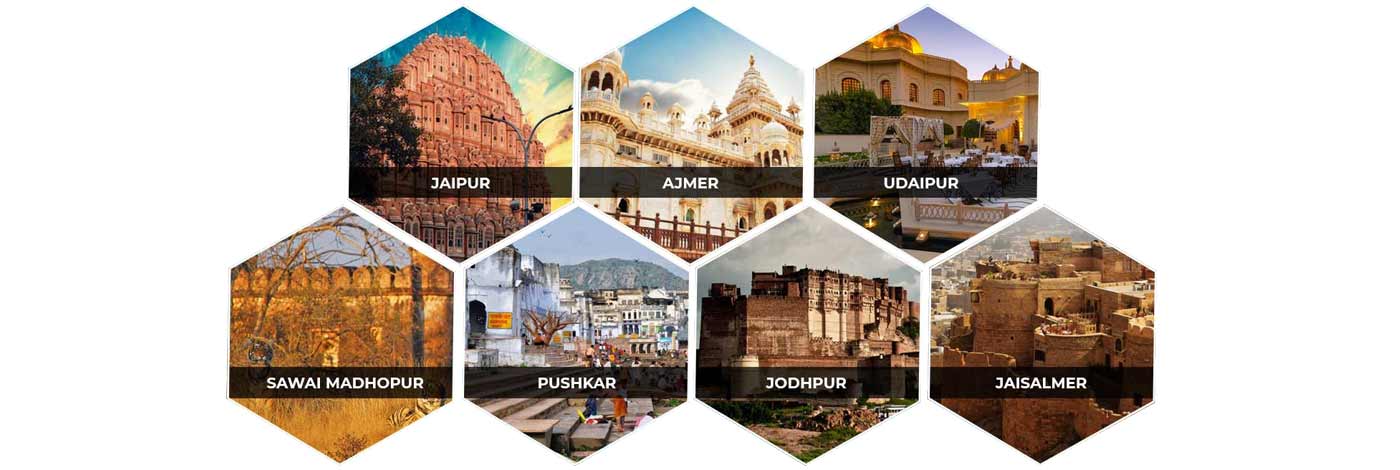
Gagron Fort
The Gagron Fort is situated at a distance of about 12 kilometres from Jhalawar. The fort was constracted in between 7th century to 14th century.Situated at the convergence of the rivers Kali Sindh and Ahu.It is bounded by water on three sides. Mukundarrah range of hills is situated behind the fort, it is covered with forests. The fort is recognized as one of those rare forts that are both a jal and a van durg. The Dargah of Mittheshah, the Sufi saint is situated outside the fort. At this dargah, every year, a fair is held The monastery of Saint Pipa Ji, a contemporary of Saint Kabir is as well situated nearby.
Gagron Fort is among the famous 9 forts which have been mentioned in the mythological books of India. This fort was started to build in the 7th century and was completed in the 14th century. Gargon fort of Garagon has recently been renowned internationally as the World Heritage Site with other five forts of Rajasthan by UNESCO. These forts are unique in the fact that they are surrounded by defending natural landscapes like forests, water bodies, etc.
History of Gagron Fort
The foundation of the Gagron Fort was laid during the 7th century and due to its highly defensive and impregnable nature, it took almost 7 more centuries to be completed, which was around the 14th century. The fort was ruled and controlled by the Khinchi rulers of Jhalawar district and was one of the most vibrant cities in the medieval period of India. This was prior to the time when Jhalawar, Kota and Bundi had not appeared as cities or districts on the map of the princely state of Rajasthan.
It was believed that Alaudin Khilji had invaded Gagron in the year 1300 which was snatched away from him by the Maharaja Jaitsi. Maharaja Prataprao, the direct descendant of King Jaitsi transformed Gagron to a full-fledged city and made it the richest city of Malwa plateau. Later, in his life, he castigated all the luxuries of life including his family life went on to attaining Nirvana. This desire of Raja Prataprao made him abdicate the throne and move towards religious preaching and become renowned by the name of “Saint Pipa”. He became one of the 12 saints of the famous ‘Ramanand Sampradaiya’ and there is also a monastery in his name situated in Dwarka within the state of Gujarat
Later on the fort was protected by the immortal Khinchi ruler, Raja Achaldas Khinchi against the treacherous foe-Sultan Hoshang Shah of Malwa who was a Mandu ruler. The latter had cheated the former on religious fronts in order to defeat him and when winning the battle seemed impossible, Rajput warriors bearing saffron robes and swords in hands bravely defended the fort, even though they knew they can’t protect the fort from defeat.
Following the death of these brave Rajput martyrs, their wives indulged in Johar willfully to pay homage to the bravery and sacrifice of their husbands. In Rajasthan Johar was the synonym for the practice of Sati which demanded that the wife to sit on the burning pyre of her husband, while she is alive. Although this seemed like a very heinous practice and was finally banned during the British rule, in this particular case, the wives of the warriors intentionally sacrificed their lives. This is a story of one of the biggest sacrifices made by a particular sect of women in India.
This entire incident inspired the Sultan himself which made him conserve the room of Raja Achaldas Khinchi as a safe haven. Following this, the successor of the brave Khinchi ruler, Raja Palhandas captured the Gagron fort once again from the clutches of the Sultan as form of revenge for his ancestor. Later it was again attacked by the Mughal ruler –Bahadur Shah during the 15th century but it was again captured from him in the 16th century by the king Mukund Singh of Kota which ensured that the fort remains under the Rajputs once and for all.
The grandeur and history of this specific and unique fort is quite inspiring, although it is quite sad that very few people are aware of this symbol of heroism, sacrifice, bravery and true retribution.
 +91 9549279999
+91 9549279999 
